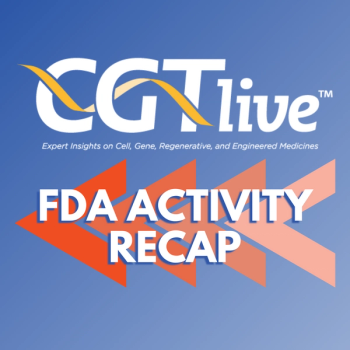
CARTITUDE-2: Patients With Refractory Multiple Myeloma Achieve Deep Response Even in Outpatient Setting
Armed with an average of 14.3 months of follow-up data, investigators share updates from a cohort in the phase 2 study evaluating cilta-cel in lenalidomide-refractory patients with progressive multiple myeloma after 1-3 prior lines of therapy at the 2022 Tandem Meetings.
Ciltacabtagene autoleucel (cilta-cel; Carvykti) was
Now, investigators are sharing updated results from CARTITUDE-2 (NCT04133636), a multicohort, open-label phase 2 study evaluating cilta-cel in patients with MM under various clinical settings, including potential outpatient administration. The findings are specifically from cohort A, which examined the efficacy and safety of cilta-cel in 20 patients with progressive MM after 1-3 prior lines of therapy and who are lenalidomide-refractory, were presented at the
Patients with MM in cohort A had no prior exposure to BCMA-targeting agents, were lenalidomide-refractory, and had undergone 1-3 lines of therapy (LOT), including a proteasome inhibitor (PI), an immunomodulatory agent (IMiD), and dexamethasone. Participants received a lymphodepletion regimen comprising cyclophosphamide (300 mg/m2) and fludarabine (30 mg/m2) for 3 days before receiving a single cilta-cel infusion (target dose 0.75×106 CAR+ viable T cells/kg) 5 to 7 days later.
The primary end point was minimal residual disease (MRD) negativity at 10-5 at any time point, with overall response rate (ORR), duration of response (DOR), time and duration of MRD negativity, and incidence and severity of adverse events (AEs) as secondary end points.
CARTITUDE-2 cohort A consisted of 20 patients who received cita-cel. The majority were male (65%), with a median age of 60 years (range 38–75). According to presenting author Jens Hillengass, MD, of Roswell Park Comprehensive Cancer Center, patients had received an average of 2 (range 1–3) prior LOT, with 12 receiving <3 and 8 receiving 3 prior. All of the patients included in the cohort had been exposed to PI, IMiD, and dexamethasone, and 95% had been refractory to the last LOT, with 40% reportedly triple-class refractory. One of the patients was treated in an outpatient facility.
In their 2022 Tandem Meetings presentation, investigators reported data with a median follow-up of 14.3 months (range, 3.3–19.0). Patients treated after an average of 2 prior LOT experienced an ORR of 95% (95% CI 75.1–99.9), with 85% (95% CI 62.1–96.8) > complete response (CR), and 90% > very good partial response (VGPR). Investigators reported that the median time to best response was 2.6 months (range, 0.9–7.9), with a median time to first response of 1 month (range, 0.7–3.3).
Thirteen of the patients reported MRD-evaluable samples at the 10-5. Of these, 92.3% (95% CI 64.0–99.8) were MRD-negative.
The secondary end point of median duration of response was not reached. Progression-free survival (PFS) at 6 months was 90% (95% CI 65.6–97.4), and 12-month PFS was 84% (95% CI 59.1–94.7).
Overall, the safety profile of cita-cel in this patient population was manageable, with 19 patients (95%) experiencing cytokine release syndrome (CRS), but only 2 patients (10%) experiencing grade 3/4 CRS. CRS onset began at median 7 days (range, 5–9) and lasted for a median duration of 4 days (range, 2–11).
There were no cases of movement and neurocognitive treatment-emergent AEs reported in cohort A. Immune Effector Cell-Associated Neurotoxicity Syndrome (ICANS) was reported in 3 patients, with a median time to onset of 8 days (range, 7–10) and a 3-day median duration (range, 1–3).
Incidence of initial grade 3/4 events not recovered to grade < 2 by day 60 included: neutropenia (20%), thrombocytopenia (15%), and lymphopenia (5%).
Study investigators reported 4 deaths following the infusion with cita-cel: 1 patient had COVID (considered treatment-related, day 100), 1 patient had sepsis (not treatment-related, day 394), 2 patients died from progressive disease (day 426 and day 550).
The 1 patient treated in the outpatient setting experienced similar safety outcomes, however, the patient experienced grade 2 isolated facial paralysis 29 days after the cita-cel infusion. The patient was treated with dexamethasone and achieved full resolution of facial paralysis within 51 days of its onset.
“At a longer median follow-up of 14.3 months, a single infusion of cita-cel led to early and deep responses in patients with MM who received 1-3 lines of therapy and were lenalidomide refractory,” investigators concluded, adding that the patient population will continue to be evaluated in CARTITUDE-4.
Reference:
Hillengass J, Cohen A, Delforge M, et al. Updated results of Cartitude-2: Ciltacabtagene autoleucel (cilta-cel), a B-cell maturation antigen (BCMA)–directed chimeric antigen receptor T cell (CAR-T) therapy, in lenalidomide-refractory patients with progressive multiple myeloma (MM) after 1–3 prior lines of therapy. Presented at: Transplantation & Cellular Therapy Meetings of ASTCT and CIBMTR; April 23-26, 2022; Salt Lake City, UT. Accessed April 21, 2022. https://tandem.confex.com/tandem/2022/meetingapp.cgi/Paper/18937
Newsletter
Stay at the forefront of cutting-edge science with CGT—your direct line to expert insights, breakthrough data, and real-time coverage of the latest advancements in cell and gene therapy.

























